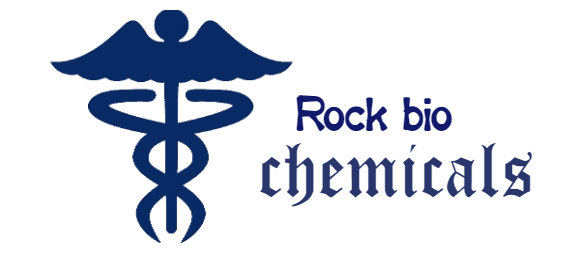Uncategorized
Chemical Safety Regulations
Outline of the Article:
-
Introduction to Chemical Safety Regulations
- Importance of chemical safety
- Overview of regulatory bodies
-
History of Chemical Safety Regulations
- Milestones in chemical safety legislation
- Evolution of regulatory frameworks
-
Key Components of Chemical Safety Regulations
- Hazard identification and risk assessment
- Labeling and packaging requirements
- Storage and handling guidelines
-
Global vs. Regional Regulations
- Discrepancies and harmonization efforts
- Impact on international trade
-
Compliance Challenges
- Complexity of regulatory requirements
- Cost implications for businesses
-
Enforcement and Penalties
- Role of regulatory agencies
- Consequences of non-compliance
-
Recent Developments in Chemical Safety Regulations
- Emerging issues and trends
- Advances in risk management approaches
-
The Future of Chemical Safety
- Predictions and forecasts
- Potential regulatory reforms
-
Case Studies and Examples
- Notable incidents and their impact
- Success stories in compliance
-
Industry Perspectives
- Stakeholder opinions and reactions
- Strategies for navigating regulations
-
Public Awareness and Education
- Importance of community engagement
- Resources for chemical safety information
-
Technological Innovations
- Tools for compliance monitoring
- Automation in regulatory reporting
-
Environmental Considerations
- Sustainable practices in chemical management
- Ecological impacts of regulatory measures
-
Collaborative Efforts
- Partnerships between industry, government, and academia
- Initiatives for knowledge sharing and capacity building
-
Conclusion
- Recap of key points
- Call to action for promoting chemical safety

Chemical Safety Regulations: Safeguarding Lives and the Environment
Chemical safety regulations play a crucial role in protecting human health and the environment from the potential risks posed by hazardous substances. These regulations encompass a wide range of measures aimed at ensuring the safe manufacture, storage, handling, transportation, and disposal of chemicals. By establishing standards and guidelines for industry compliance, regulatory frameworks help mitigate the adverse effects of chemical exposure on individuals, communities, and ecosystems.
Importance of Chemical Safety
Chemicals are integral to modern society, serving various purposes in industry, agriculture, healthcare, and everyday products. However, many chemicals can pose significant risks if not properly managed. Exposure to hazardous substances can lead to acute or chronic health effects, including poisoning, respiratory problems, cancer, and reproductive disorders. Moreover, chemical accidents and spills can result in environmental pollution, contamination of water sources, and damage to wildlife habitats.
Overview of Regulatory Bodies
Regulatory oversight of chemical safety is carried out by government agencies at the national, regional, and international levels. These agencies develop and enforce laws, regulations, and standards to minimize the risks associated with chemical use and exposure. Examples of prominent regulatory bodies include the Environmental Protection Agency (EPA) in the United States, the European Chemicals Agency (ECHA) in the European Union, and the World Health Organization (WHO) through its International Program on Chemical Safety (IPCS).
Milestones in Chemical Safety Legislation
The history of chemical safety regulations is marked by significant milestones that reflect evolving societal concerns and scientific understanding. One of the earliest pieces of legislation addressing chemical hazards was the U.S. Federal Food, Drug, and Cosmetic Act of 1938, which aimed to ensure the safety of consumer products. Subsequent laws, such as the Clean Air Act, the Clean Water Act, and the Occupational Safety and Health Act, expanded regulatory authority over specific aspects of chemical management.
Hazard Identification and Risk Assessment
Central to chemical safety regulations is the process of hazard identification and risk assessment. This involves evaluating the inherent properties of chemicals, their potential effects on human health and the environment, and the likelihood of exposure in various scenarios. Risk assessment methodologies help prioritize substances for regulatory action, determine appropriate control measures, and establish permissible exposure limits.
Labeling and Packaging Requirements
Effective communication of chemical hazards is essential for ensuring safe handling and use. Regulatory agencies require manufacturers and distributors to label containers with standardized symbols, warnings, and safety information. Additionally, packaging specifications may be imposed to prevent leakage, breakage, or tampering during transport and storage.
Storage and Handling Guidelines
Proper storage and handling practices are critical for minimizing the risk of accidents and spills. Chemical safety regulations establish requirements for the design and maintenance of storage facilities, as well as protocols for handling, transporting, and disposing of hazardous materials. Compliance with these guidelines helps prevent workplace incidents, protect emergency responders, and safeguard surrounding communities.
Discrepancies and Harmonization Efforts
While there is a growing recognition of the need for harmonized chemical safety regulations on a global scale, discrepancies still exist among different jurisdictions. Divergent regulatory requirements can create barriers to trade, increase compliance costs for businesses, and hinder international cooperation on environmental and public health issues. Efforts to harmonize standards and align regulatory approaches are underway through initiatives such as the United Nations’ Globally Harmonized System of Classification and Labelling of Chemicals (GHS).
Complexity of Regulatory Requirements
Navigating the landscape of chemical safety regulations can be daunting for businesses, especially small and medium-sized enterprises (SMEs). Compliance often requires extensive documentation, testing, and reporting, which can strain resources and expertise. Moreover, regulatory frameworks may vary across industries and geographic regions, adding to the complexity of compliance efforts.
Role of Regulatory Agencies
Regulatory agencies play a pivotal role in enforcing chemical safety regulations and ensuring accountability within the industry. These agencies conduct inspections, audits, and enforcement actions to verify compliance with statutory requirements and respond to violations. By monitoring chemical activities and responding to emerging risks, regulatory authorities help prevent accidents, mitigate environmental impacts, and protect public health.
Predictions and Forecasts
Looking ahead, the landscape of chemical safety regulations is expected to undergo further evolution in response to emerging challenges and technological advancements. Anticipated trends include greater emphasis on risk-based approaches, increased transparency and public participation, and enhanced integration of digital tools and data analytics into regulatory processes.
Call to Action
As stewards of chemical safety, stakeholders across government, industry, academia, and civil society must collaborate to address current and future challenges. By promoting awareness, fostering innovation, and advocating for effective regulation, we can create a safer and more sustainable future for generations to come.
FAQs (Frequently Asked Questions)
-
What is the purpose of chemical safety regulations? Chemical safety regulations aim to protect human health and the environment from the potential risks associated with hazardous substances.
-
How are chemical safety regulations enforced? Regulatory agencies conduct inspections, audits, and enforcement actions to ensure compliance with statutory requirements and address violations.
-
What are some common compliance challenges for businesses? Businesses may face challenges such as understanding complex regulatory requirements, allocating resources for testing and documentation, and keeping up with evolving standards.
-
What role do technological innovations play in chemical safety? Technological innovations, such as automation, data analytics, and remote sensing, are transforming how chemical safety is monitored, assessed, and managed.
-
How can individuals contribute to chemical safety efforts?

